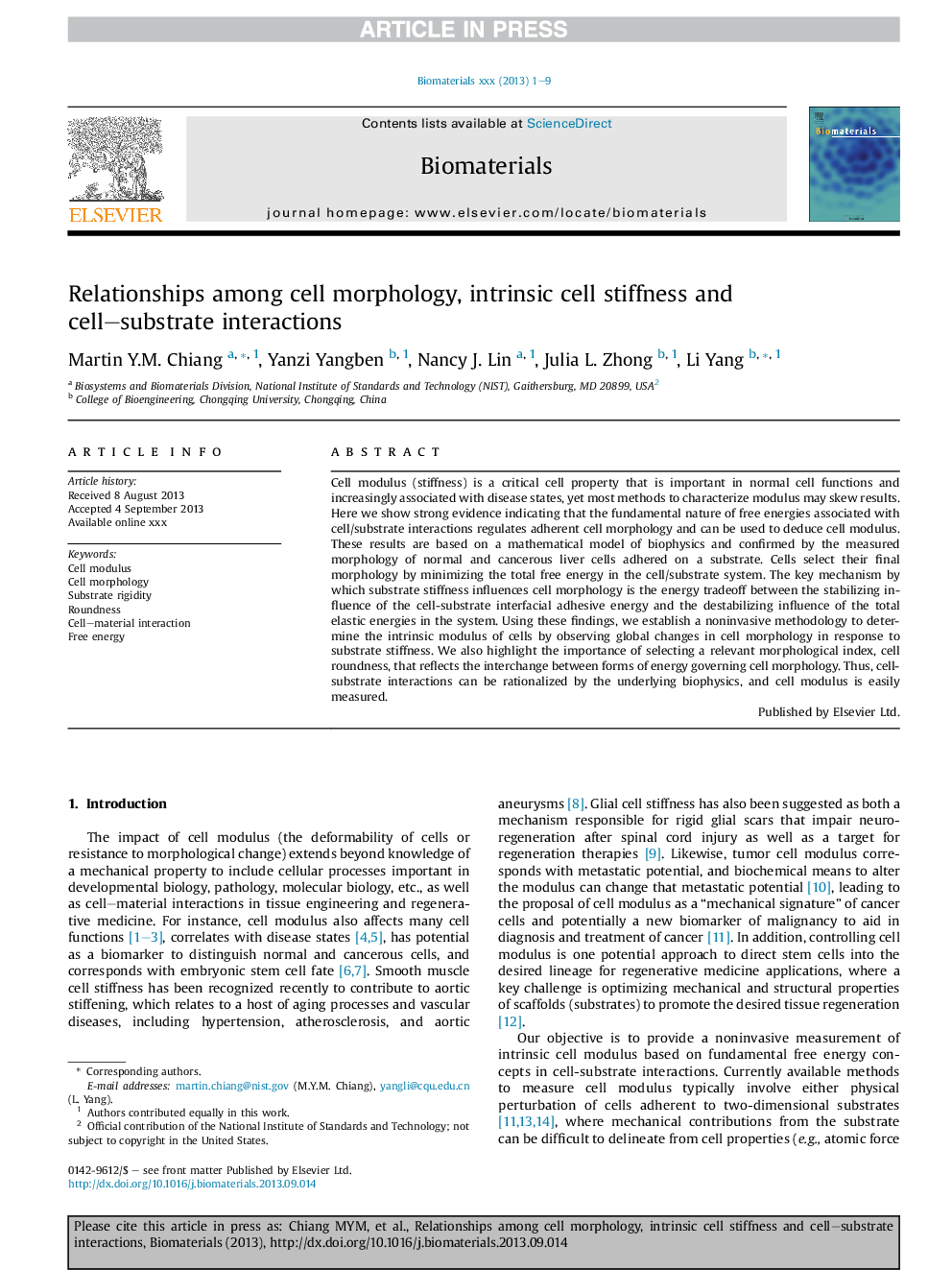| Article ID | Journal | Published Year | Pages | File Type |
|---|---|---|---|---|
| 10228087 | Biomaterials | 2013 | 9 Pages |
Abstract
Cell modulus (stiffness) is a critical cell property that is important in normal cell functions and increasingly associated with disease states, yet most methods to characterize modulus may skew results. Here we show strong evidence indicating that the fundamental nature of free energies associated with cell/substrate interactions regulates adherent cell morphology and can be used to deduce cell modulus. These results are based on a mathematical model of biophysics and confirmed by the measured morphology of normal and cancerous liver cells adhered on a substrate. Cells select their final morphology by minimizing the total free energy in the cell/substrate system. The key mechanism by which substrate stiffness influences cell morphology is the energy tradeoff between the stabilizing influence of the cell-substrate interfacial adhesive energy and the destabilizing influence of the total elastic energies in the system. Using these findings, we establish a noninvasive methodology to determine the intrinsic modulus of cells by observing global changes in cell morphology in response to substrate stiffness. We also highlight the importance of selecting a relevant morphological index, cell roundness, that reflects the interchange between forms of energy governing cell morphology. Thus, cell-substrate interactions can be rationalized by the underlying biophysics, and cell modulus is easily measured.
Related Topics
Physical Sciences and Engineering
Chemical Engineering
Bioengineering
Authors
Martin Y.M. Chiang, Yanzi Yangben, Nancy J. Lin, Julia L. Zhong, Li Yang,
